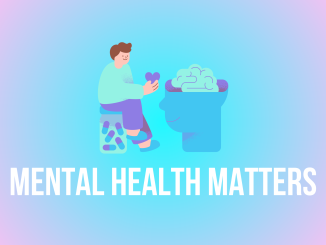
Preferred Online Publication: The Conversation
Introduction
Australian student mental health has long been a contentious social issue. In the past 12 months, 1 in 5 adults and 1 in 7 young people suffered mental health issues, according to AIHW (Australian Institute of Health and Welfare) (2023) figures. Additionally, according to patient demographics (AIHW, 2023) the rate of same-day public admissions for mental health-related hospitalisations with specialised psychiatric care in 2020-21 was highest for patients aged 18-24 years (13 per 10,000 population).
Furthermore, the COVID-19 pandemic has made things worse by raising anxiety, sadness, and stress levels in college students. One in four Australian university students have mental health issues, according to a survey conducted by Headspace (2020). These figures demonstrate that the mental health issues faced by Australian university students are a widespread concern. Long waitlists, inadequate financing, and a lack of resources are the results of the current mental health services offered by universities being unable to meet the rising demand for mental health treatment. This article will present a well researched and informative review of the need for comprehensive mental health services in Australian universities.
Elements Included
The article will highlight the following key points: firstly, the state of Australian university students’ mental health and the psychological problems they encounter. I’ll include multimedia elements in this section, such as data graphs and charts from relevant websites (like AIHW, etc.), as well as video or photographic interviews with Australian university students (asking them about their mental health status, how the COVID-19 pandemic has affected the mental health crisis, and how they view the mental health services offered by their institutions). To further strengthen the authority and persuasiveness of the article and to aid the reader in understanding it, I also add hyperlinks when giving pertinent material or terms.
Second, the current state of mental health services in Australian universities, including the gaps and limitations of the services provided, the long waitlists, and the lack of resources. I will also insert multimedia in this part, including videos or photographs of interviews with school mental health service staff or psychologists to add an authoritative source of information.
Thirdly, I’ll combine the first two points to highlight the current issues with mental health services in Australian universities, the need for comprehensive mental health services there, and how mental health service systems operate in universities abroad. I’ll do this by demonstrating various models of mental health services offered by universities abroad that Australian universities could adopt. I’ll use images in this section to illustrate the numerous challenges that colleges and universities have while adopting comprehensive mental health services. These obstacles include a lack of finance, staffing, and cooperation between the government and universities.
Conclusion
In order to give a first-hand picture of the difficulties facing mental health services in Australian universities, it will also employ multimedia, try to interview mental health professionals, university administrators, and students, as well as use hyperlinks. In order to solve student mental health problems, the essay will conclude by underlining the gravity of the situation and the need for institutions to give mental health services a top priority. Additionally, it will offer concrete actions that institutions can take to create all-encompassing mental health care.
Reference
Australian Institute of Health and Welfare. (2023). Mental Health Overview. Retrieved from https://www.aihw.gov.au/mental-health/overview
Australian Institute of Health and Welfare. (2023). Admitted Patients Mental Health-related Care. Retrieved from https://www.aihw.gov.au/mental-health/topic-areas/admitted-patients#Patient%20demographics
Headspace. (2020). Youth Mental Health and Wellbeing Over Time. Retrieved from https://headspace.org.au/assets/Uploads/Insights-youth-mental-health-and-wellbeing-over-time-headspace-National-Youth-Mental-Health-Survey-2020.pdf




Hi Yuanying, your proposal is very well researched and it seems like you have a really good grasp on the situation of mental in Australian universities so far. Well done! Perhaps to improve, you could add some information on why The Conversation is your chosen publication. Why would The Conversation’s audiences be interested in this type of story? Also, the topic of mental health is already an ongoing conversation in Australian society – what is your unique angle on the topic? Your plan to include multimedia in the story seems well thought out, and I’m really looking forward to seeing the final product!